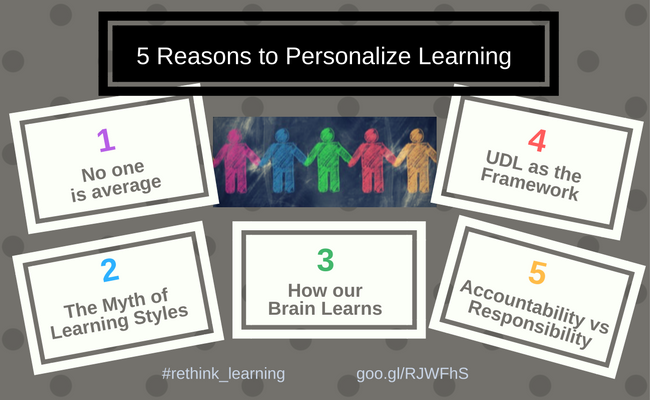Personalized Learning Spotlight |
What Is Personalized Learning?
|
Personalized learning has several definitions in the education world. The American Institutes for Research (AIR) defines personalized learning as an educational approach that
· is student-centered, offering varied and flexible learning opportunities, modalities, and supports designed to meet the unique strengths, needs, and backgrounds of each student;
· promotes agency by harnessing student interests and enabling students to exercise responsibility, self-management, and decision making as they help drive their own learning;
· is competency-based, setting a high bar for learning, offering flexible place and pace for reaching goals, and awarding credit only when mastery has been successfully demonstrated; and
· promotes deeper learning by offering students content-rich, challenging, applied, and collaborative learning experiences as well as meaningful feedback and reflection as they build the broad knowledge and transferable skills they will need to continuously learn, adapt, and thrive in the 21st century. Learn more: https://www.air.org/resource/spotlight-personalized-learning
|
West Valley School District, Yakima, Washington
Challenge: How can school districts build on existing initiatives to implement a sustainable vision for personalized learning that meets the needs of all students?
Introduction
COVID-19 school building closures had, and will continue to have, a staggering impact on K–12 education in the United States. The rapid shift to remote teaching threw existing inequities into sharp relief, as millions of students around the country lack access to broadband connectivity, devices, and high-quality digital learning content. As educators, state and district leaders, communities, and families look beyond emergency remote teaching to envision what comes next, they will face significant challenges in addressing loss of learning and student social and emotional health, and ensuring that all students are ready for the next school year. However, the COVID-19 emergency also provides schools and districts with an unprecedented opportunity to reimagine K–12 education and underscores the need for learning environments that are flexible, student-centered, and personalized to address the wide variability of student needs.
In this Personalized Learning Spotlight featuring West Valley School District (WVSD) in Yakima, Washington, district leaders collaborated with the community to implement a personalized learning plan districtwide to meet students where they are and move them along the continuum of learning. As districts plan for the next school year, AIR hopes that this Spotlight will provide other district and school leaders with beneficial insights to support new opportunities to reimagine teaching and learning in the COVID-19 era.
[“In less than 48 hours, our staff was engaged in virtual instruction to our students, and since, we have gone 1:1 K-4, and have 100% connectivity through a virtual learning grant. Amazing work by an amazing team.”
Unifying District Initiatives to Create a Culture of Innovation and Personalized Learning
WVSD is a small suburban public school district in Yakima, Washington, serving more than 5,600 students with six elementary schools, one middle school, and one high school. Led by Superintendent Michael Brophy, WVSD is in its second year of a gradual transition to personalized learning.
American Association of School Administrators (AASA) AASA members advance the goals of public education and champion children’s causes in their districts and nationwide. As school system leaders, AASA members set the pace for academic achievement. They help shape policy, oversee its implementation, and represent school districts to the public at large. (https://aasa.org)
|
In 2018, Superintendent Brophy attended an American Association of School Administrators (AASA) meeting on the topic of personalized learning and returned afire with new ideas. The district had existing initiatives in place focused on blended learning and a 15-year history of competency-based education,[1] as well as elements of student-centered instruction in various programs throughout the district. Brophy and the district leadership team saw the opportunity to build on the foundation of these initiatives to cultivate personalized learning practices and build a shared vision for teaching and learning that leads to sustainable change.
Learn how WVSD leadership built on their existing blended learning and competency-based practices to cultivate a shared vision of personalized learning across the district. The WVSD team shares challenges and lessons learned during their implementation process and offers recommendations for other districts considering a shift to more personalized instruction.
West Valley School District
5,611 students
• 60% White
• 33% Hispanic
• 45% low income
• 8% English language learners
306 teachers
8 schools
• 6 elementary schools
• 1 middle school
• 1 high school
|
Setting the Stage for Transformation
Beginning in fall 2018, the district leadership team launched a gradual implementation of personalized learning strategies with a focus on instruction that is
· paced to learning needs,
· tailored to learning preferences, and
Recognizing that sustainable transformation requires significant effort, district leaders are focused on supporting gradual implementation with both educator- and community-based scaffolding.
Community-Based Supports
· The school board engages in study sessions open to the public to bring them up to speed on the latest personalized learning work in the district.
· The Superintendent’s Blog shares readings, information, and snapshots of district practice with parents, administrators, teachers, and other interested stakeholders (http://wvsdsupblog.blogspot.com/).
Educator-Based Supports
· Educators across the school district participate in an annual professional development summer institute that includes an entire strand of sessions focused on building instructional capacity for personalized learning.
· Throughout the school year, instructional coaches work side by side with teachers to support the integration of personalized learning teaching strategies.
· The district’s induction program welcomes all teachers who are new to the district (not just first-time teachers) with a 2-year one-on-one mentor and orientation to West Valley.
This two-pronged approach to engaging with and building support among internal and external stakeholders in the district has helped cultivate teacher- and community-level support for personalized learning, as well as create the structures necessary for long-lasting change. Personalized learning is becoming systemic through district structures like response to intervention (RTI), assessment and data use, and professional development and coaching for teachers. And personalized learning is permeating the community through leadership enthusiasm, open communication, and building buy-in. These efforts reap benefits for the district. Parents are intrigued—not all are convinced it’s working yet, but they are willing to let the superintendent and the teachers try. The local community college and several area businesses—including Microsoft, Boeing, a local winery, and fabricator Magic Metals—are actively partnering with the district. A WVSD school board member summed up the community reaction: “We get lots of questions, lots of things raised up—personalized learning is not one of them. It sells itself.” And, finally, teachers feel supported by their leadership and the wider community to innovate and try new things.
Building a Culture of Innovation
Superintendent Brophy shared a desire to see the West Valley school system “transformed so that even if the leadership changes, teachers realize, ‘This is the way I need to teach, and this is the way kids need to learn.’ I really believe that it’s going to be the advent of the future, not only for West Valley, but for others.”
Some of the programs that are now receiving attention as part of the WVSD personalized learning efforts have been around for years. The high school’s advanced classes and Futures CTE pathways and apprenticeship program predate it, as do many of the longer term projects that incorporate student choice and interests. One elementary school teacher said, “Our principals are telling us, ‘You’re already doing this.’ And we are, but we never called it personalized learning. It was, ‘that’s how you reach all kids.’ We just didn't give it that name.”
New or not, teachers at all levels noted that a culture of innovation in their schools allows teachers to experiment with new approaches. The permission to try and to remain flexible is key. “Our administrators, to their credit, are very supportive. So, if we go to them and say, ‘Hey, we want to try this,’ they let us do things,” said an elementary teacher.
The balance between autonomy and structure that personalized learning requires can be tricky, and although some teachers are ready to dive in headfirst, others are taking baby steps. Principals agreed that creating a culture in which teachers feel safe to try, not necessarily succeeding the first time, is key. “Knowing they have the flexibility to fail and just to take it in their own time is huge.” This flexibility and autonomy empowers teachers to identify what isn’t working for them or their students and to make changes that fit their contexts. For example, many teachers noted that students become overwhelmed by too much choice. “That’s some of the feedback I got from students, was this was almost too overwhelming because it was so wide open,” one high school teacher said. “And so, I’ve just tried to be a lot more intentional about the design that I have going in and then also getting that student feedback has been very critical.” A Wide Hollow Elementary teacher echoed the importance of flexible planning in personalized learning: “This whole personalized learning thing is so different from the elementary level to the high school level. No one-size-fits-all thing can fit the whole spectrum.”
BADGE BOOKS:
The “badge books” in Ferguson’s class are a kindergarten version of personalized learning, but the focus is carried out at each building in the district in a variety of ways. Teachers work to maximize student “voice and choice” from West Valley’s prekindergarten programs through high school, where students can engage in nine different career pathways through the Futures program and take courses that offer college credit.
 |
Personalized Learning in Practice: Giving Students and Teachers Freedom to Explore
It makes sense that an approach whose foundational assumption is that instruction should be tailored to the unique needs, preferences, and interests of learners would look so different across schools and grade levels. In various ways, WVSD’s principals and teachers are working to meet the developmental and learning needs of students at all grade levels.
Teachers create learning opportunities with badge books (see sidebar) in kindergarten, flexible seating for first graders, “playlists” in upper elementary, station rotation, project-based learning choices, and pathways in middle and high schools. Teachers engage students in the process by engaging with their own data as part of the personalized learning journey. “I share my data with my kids now,” one fourth-grade teacher said. “Over the last couple of years, I have been working on that and it makes such a huge difference in their ownership over their learning. Having them see their scores really helps them to make that connection.”
Teachers create learning opportunities with badge books (see sidebar) in kindergarten, flexible seating for first graders, “playlists” in upper elementary, station rotation, project-based learning choices, and pathways in middle and high schools. Teachers engage students in the process by engaging with their own data as part of the personalized learning journey. “I share my data with my kids now,” one fourth-grade teacher said. “Over the last couple of years, I have been working on that and it makes such a huge difference in their ownership over their learning. Having them see their scores really helps them to make that connection.”
Just as personalized learning provides students the freedom to explore their interests at their own level, teachers have the opportunity to explore the implementation of personalized learning in their own classrooms, at their own pace. An idea that was introduced to the district from the top is now growing organically from the grassroots.
Teachers are engaging with the approach in significant ways. Some, like Cottonwood Elementary teachers, are working together with teams or coteachers to pilot new ideas, leading professional development with their colleagues and refining their implementation in planned cycles. Others are trying new, smaller reforms to their existing approaches—giving students “playlists” of resources to explore or topic choices within projects.
Addressing Challenges in the Path to Implementation
Shifting to a completely student-centered approach is not without difficulties and may not always be the most effective educational option for every learning situation. West Valley is navigating their way through some challenges as they expand and refine their approach.
Many teachers indicated the breadth of potential personalized learning strategies and definitions had been the most challenging part of implementation. The district started the 2018–19 school year with a focus on blended learning, an educational program in which a student learns at least in part through online learning, with some element of student control over time, place, path, or pace.[3] As personalized learning was rolled out, many teachers became confused about the difference. One instructional coach who is also on the district’s Digital Learning Team summed it up: “Okay, here’s personalized learning. Well, what does that mean? What does it look like? We've had conversations around how technology can be personalizing learning that is not in and of itself personalized learning. How does something that a teacher’s doing in the classroom—an activity, process, or routine—either support personalized learning or not?”
Words like structure, intentional, guided, planning, and directed emerged over and over as teachers talked about how they make personalized learning strategies work in their classrooms. One middle school teacher noted, “There are a lot of things that you have to think about in advance, and I think that’s the part that takes the most time. Like to try and think through, ‘How do I do that?’”
The levels of uncertainty involved can be disconcerting, but the district’s instructional coaches are there to help. “There’s times where it still needs to be guided by the instructor because it’s information students need to learn, but you can scaffold it in such a way that the student has some choice on how they go about accomplishing that task,” one said.
Effective personalized learning engages students where they are and uses their preferences and interests to make them want to make the stretch that learning requires. District leaders and teachers already had an established understanding of the learning standards and classroom differentiation techniques, which meant they were ready and able to take on the new focus. “There was a readiness to benefit, I think, with personalized learning because all the good work that had been in place prior,” Brophy said. “We already had the foundation of 15 years of competency-based learning, because if you went from no competencies to personalized learning, you’d have utter chaos. So, the competency-based foundation had already been laid, which really is what made this transition possible.”
Lessons Learned From Gradual Implementation
Teachers can explore the personalized learning strategies in their own classrooms, at their own pace.
· Just as personalized learning strategies allow students to explore interests within individual learning styles, teachers too can explore strategies in their own classrooms, at their own pace.
Students are clear on the expectations for personalized learning tasks and provided with opportunities to practice.
· Students of all ages can develop skills to be autonomous in their learning: “We’ve spent the first 6 weeks of school practicing our routines and expectations so that students can be self-managers.” (instructional coach)
District leaders encourage principals and teachers to foster cultures of innovation and
risk-taking to improve learning outcomes for all students.
· District and school administrators balance structure and autonomy supporting teachers’ new approaches for personalized learning, as well as teachers’ taking baby steps.
School leaders and teachers receive support through professional development and
job-embedded coaching.
· West Valley’s instructional coaches provide real-time support such as collaborating with teachers to scaffold instruction and identifying choices for students to accomplish a learning task.
District leaders communicate the vision and raise awareness throughout the school community.
· School board study sessions focus on providing community members with information about the latest personalized learning practices.
· The Superintendent’s Blog shares research, information, and snapshots of district practice (http://wvsdsupblog.blogspot.com/)
Recommendations for Districts Considering Personalized Learning
In their journey toward personalized learning, WVSD has navigated some challenges to encourage innovation and sustained growth. As personalized learning grows in WVSD, the emerging lessons may be beneficial to other districts considering embarking on the personalized learning journey.
· Encourage principals and teachers to take risks to improve learning outcomes for all students.
· Be intentional when providing direction, structure, and guidance for personalized learning across schools.
· Schedule designated professional learning throughout the year to support principals and teachers to analyze data and quantify the impact of personalized learning.
· Provide designated time throughout the year for teachers’ consistent and ongoing collaboration with colleagues.
· Create model classrooms and provide coverage for teachers to observe model teachers and personalized learning instructional strategies in action.
· Provide opportunities for teachers to coteach with model teachers.
Conclusion
WVSD has created a culture in which teachers and leaders feel comfortable and encouraged to take risks and try new approaches for engaging students in personalized learning. Within the schools and in the district administration, staff were open to sharing the challenges of introducing personalized learning components within instruction. The lessons learned from the first year of gradual implementation provide additional understanding of what structures, resources, and supports teachers need to move forward to expand personalized learning opportunities across the district. AIR hopes that this story of West Valley’s journey provides other district and school leaders with insights beneficial to their personalized learning efforts.
AIR would like to thank Superintendent Michael Brophy, his leadership team, and the principals, teachers, students, and instructional coaches who generously gave their time to share their stories. AIR has extensive expertise in designing and implementing personalized learning approaches, including supporting leadership teams in making systemic changes, aligning new efforts with local priorities and context, and developing strategic communications and outreach. For more information, please contact us at www.air.org
[1] Competency-based education (CBE) supports personalized learning by removing time in the classroom as a measurement of learning and emphasizes student progression through academic work toward demonstrated mastery of defined competencies. CBE is often referred to as proficiency-based, or mastery learning, and can be associated with standards-based education, which defines the skills and knowledge students are expected to achieve.
[2] U.S. Department of Education, paraphrased in McClaskey, K., & Bray, B. (2013). A step by step guide to personalize learning. Arlington, VA: International Society for Technology in Education. Retrieved from https://files.eric.ed.gov/fulltext/EJ1015153.pdf





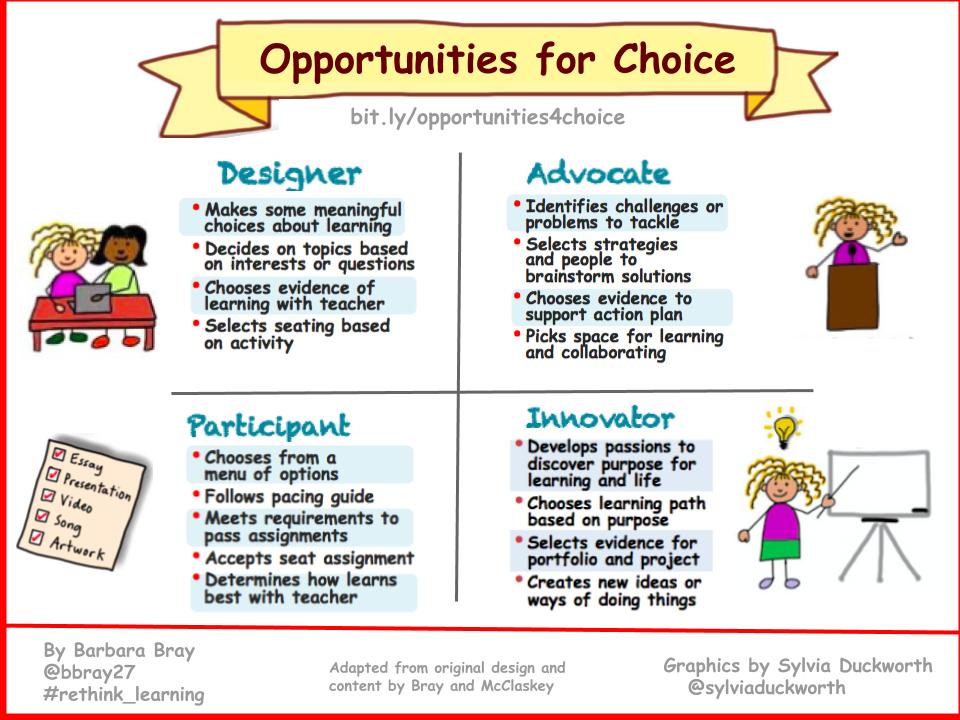
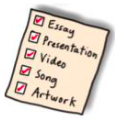 At the
At the 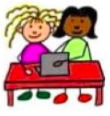 At the
At the  At the
At the 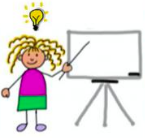 At the
At the 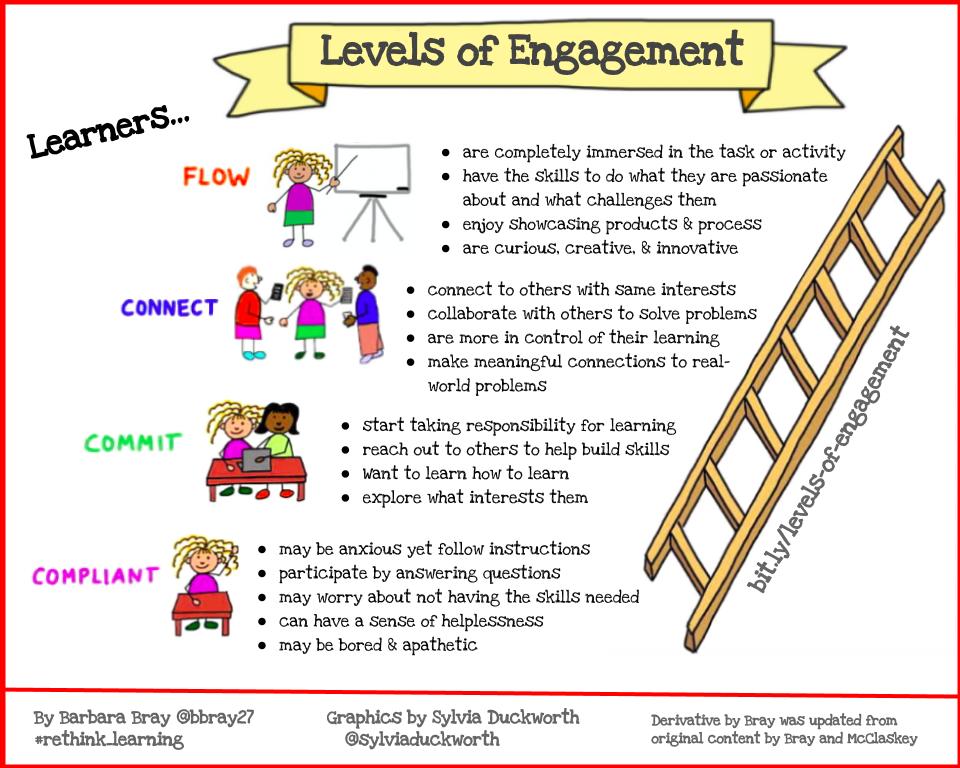
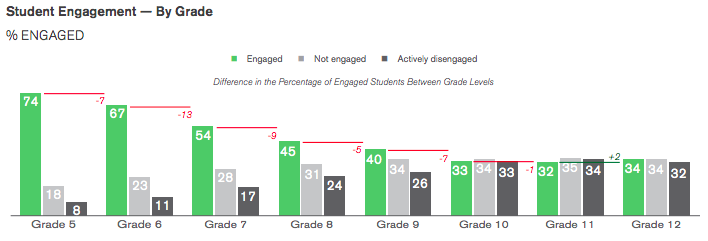
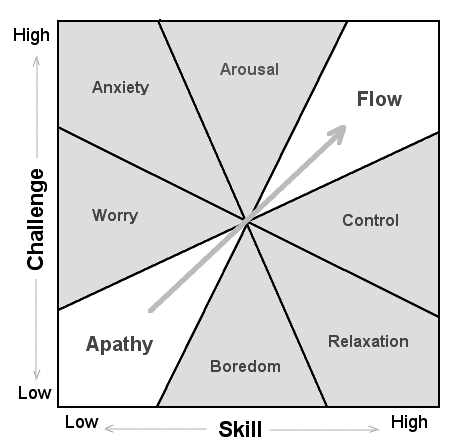
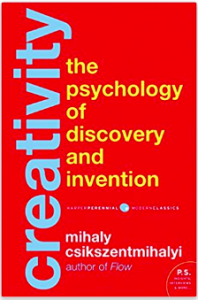
 In the
In the 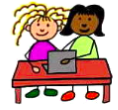 In the
In the  In the
In the 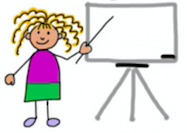 In the
In the 